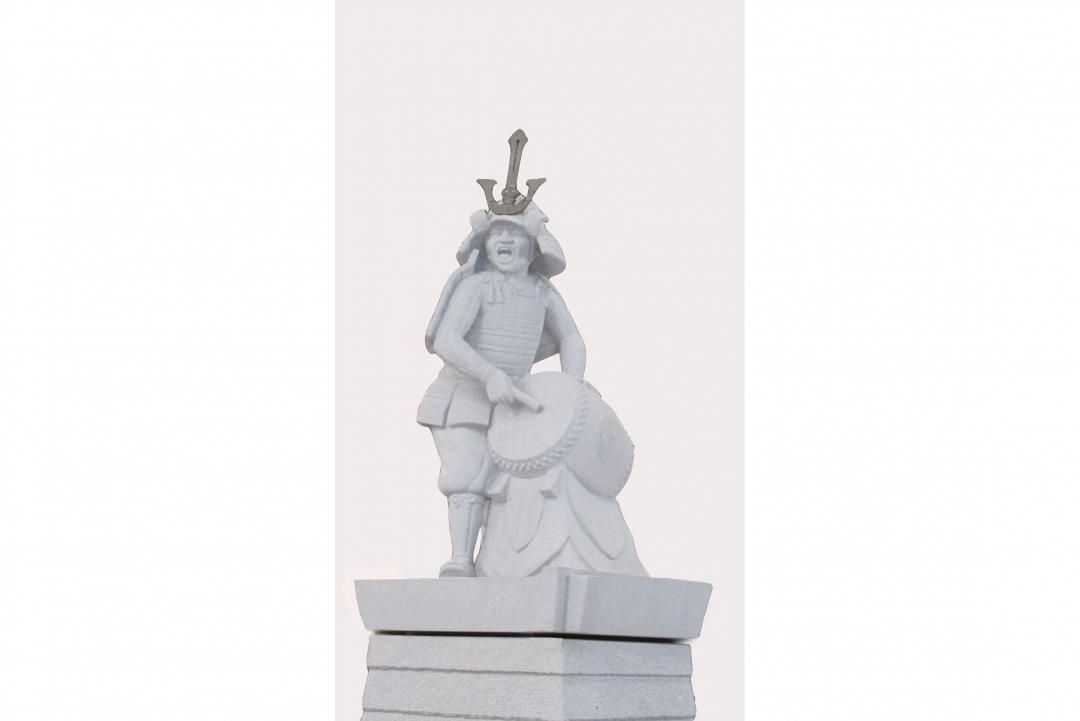Legend Of The Drum. Sakai Tadatsugu (1527 – 1596)

Sakai Tadatsugu was eldest of the Shitenno*, and 15 years senior to his master, Tokugawa Ieyasu.
In 1572, Ieyasu was defeated by Takeda Shingen in the Battle of Mikatagahara (modern-day Hamamatsu City, Shizuoka Prefecture) and barely managed to escape back to his base at Hamamatsu Castle (Hamamatsu City, Shizuoka Pref.). With the castle then facing attack, the 46-year-old Tadatsugu devised a plan. Lighting all the castles’ campfires and beating a great drum from the watchtower to inspire the troops, he ordered the castle gates be opened wide. When the pursuing Takeda forces came across the illuminated castle with its gates ajar, and the sound of the drums ringing out, they nervously suspected an ambush and cautiously refrained from attacking. Thanks to Tadatsugu’s quick thinking, the greatest crisis of Lord Tokugawa Ieyasu’s life had been averted.
This statue recreates the bravery shown by Tadatsugu in his masters’ moment of anguish.
*Shitenno, also known as the “Four Heavenly Kings”, were the four loyal generals who played a major role supporting Tokugawa Ieyasu’s efforts in the unification of Japan.
Okazaki Castle Outer Moat Enclosure >

Legend Of The Drum. Sakai Tadatsugu (1527 – 1596)
Sakai Tadatsugu was eldest of the Shitenno*, and 15 years senior to his master, Tokugawa Ieyasu.
In 1572, Ieyasu was defeated by Takeda Shingen in the Battle of Mikatagahara (modern-day Hamamatsu City, Shizuoka Prefecture) and barely managed to escape back to his base at Hamamatsu Castle (Hamamatsu City, Shizuoka Pref.). With the castle then facing attack, the 46-year-old Tadatsugu devised a plan. Lighting all the castles’ campfires and beating a great drum from the watchtower to inspire the troops, he ordered the castle gates be opened wide. When the pursuing Takeda forces came across the illuminated castle with its gates ajar, and the sound of the drums ringing out, they nervously suspected an ambush and cautiously refrained from attacking. Thanks to Tadatsugu’s quick thinking, the greatest crisis of Lord Tokugawa Ieyasu’s life had been averted.
This statue recreates the bravery shown by Tadatsugu in his masters’ moment of anguish.
*Shitenno, also known as the “Four Heavenly Kings”, were the four loyal generals who played a major role supporting Tokugawa Ieyasu’s efforts in the unification of Japan.
